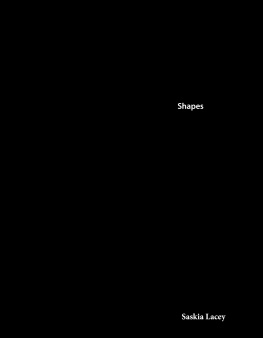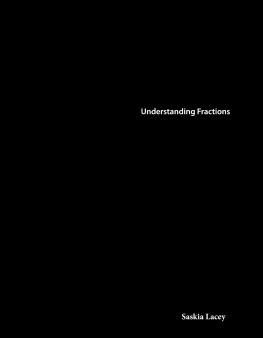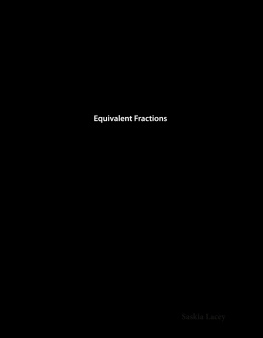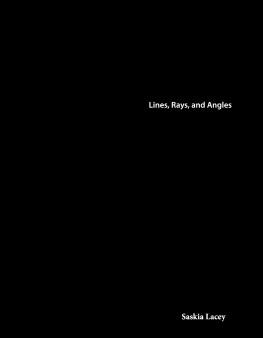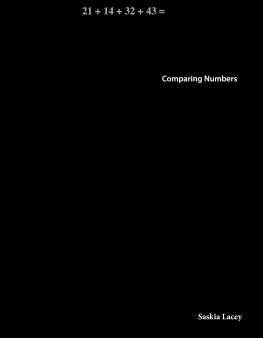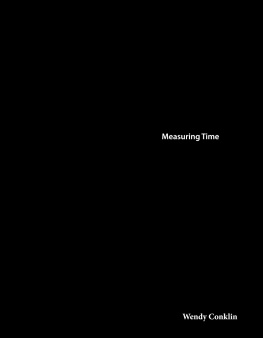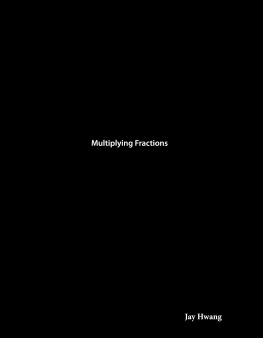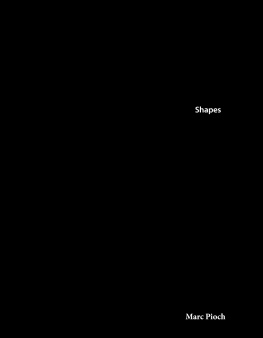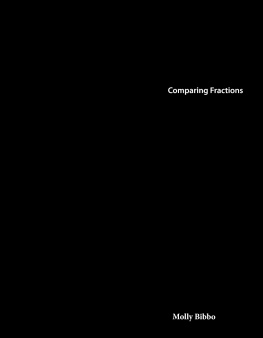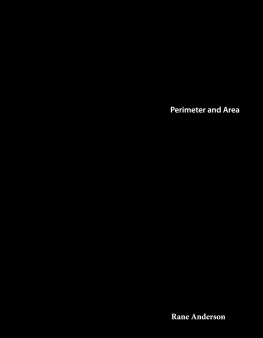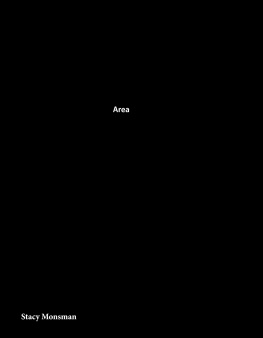Saskia Lacey - Art and Culture: The Stories of Constellations: Shapes
Here you can read online Saskia Lacey - Art and Culture: The Stories of Constellations: Shapes full text of the book (entire story) in english for free. Download pdf and epub, get meaning, cover and reviews about this ebook. year: 2017, publisher: Teacher Created Materials, genre: Children. Description of the work, (preface) as well as reviews are available. Best literature library LitArk.com created for fans of good reading and offers a wide selection of genres:
Romance novel
Science fiction
Adventure
Detective
Science
History
Home and family
Prose
Art
Politics
Computer
Non-fiction
Religion
Business
Children
Humor
Choose a favorite category and find really read worthwhile books. Enjoy immersion in the world of imagination, feel the emotions of the characters or learn something new for yourself, make an fascinating discovery.
- Book:Art and Culture: The Stories of Constellations: Shapes
- Author:
- Publisher:Teacher Created Materials
- Genre:
- Year:2017
- Rating:3 / 5
- Favourites:Add to favourites
- Your mark:
- 60
- 1
- 2
- 3
- 4
- 5
Art and Culture: The Stories of Constellations: Shapes: summary, description and annotation
We offer to read an annotation, description, summary or preface (depends on what the author of the book "Art and Culture: The Stories of Constellations: Shapes" wrote himself). If you haven't found the necessary information about the book — write in the comments, we will try to find it.
Art and Culture: The Stories of Constellations: Shapes — read online for free the complete book (whole text) full work
Below is the text of the book, divided by pages. System saving the place of the last page read, allows you to conveniently read the book "Art and Culture: The Stories of Constellations: Shapes" online for free, without having to search again every time where you left off. Put a bookmark, and you can go to the page where you finished reading at any time.
Font size:
Interval:
Bookmark:
0covercover.xhtmlArt and Culture The Stories of Constellations Shapes Saskia Laceycover1page0001page0001.xhtml22page0002page0002.xhtml33page0003page0003.xhtml44page0004page0004.xhtmlTable of Contents Attributes of Ancient Myths 4 Constellations 8 Myth and Meaning 25 Star Stories 27 Problem Solving 28 Glossary 30 Index 31 Answer Key 3255page0005page0005.xhtmlAttributes of Ancient Myths Meet the ancient Greeks. They lived thousands of years ago. Some of history's greatest minds came from early Greece. They invented many things. They built the first theaters. They developed democracy. They even built the first showers! Modern society owes much to early Greek culture. Mythology was very important to the Greeks. They believed in many gods and goddesses. Each had unique attributes, or traits. Some gods were known for their strength. Others were known for their wisdom. Still others were praised for their beauty. The ruins of the Acropolis in Athens are evidence of Greek architecture.66page0006page0006.xhtmlThe Parthenon is the ancient temple to Athena. The city of Athens is named for the Greek goddess Athena.77page0007page0007.xhtmlThe Greeks believed that gods and goddesses commanded the forces of nature. They ruled lightning and thunder. They created waves and wind. Each part of nature came from great and unseen powers. The gods made their home on Mount Olympus. Their ruler was Zeus (zoos), the sky god. Zeus had two brothers, Poseidon (puh-SY-dehn) and Hades (HAY-deez). Poseidon was the god of the seas. Hades was the god of the dead. In some ways, the three brothers were alike. Each brother was immortal, had great power, and ruled over a realm of Earth. They shared these attributes with one another. Zeus Poseidon88page0008page0008.xhtmlIn other ways, the brothers were different. Zeus was known for his power. Poseidon was thought to be moody. Hades was stern. They each ruled a different level of Earth. Zeus ruled the sky, Poseidon ruled the water, and Hades ruled the underworld. These attributes made them unique. But attributes are not just used to describe gods and goddesses. They describe many things, such as trees, animals, or even shapes! Mount Olympus Hades99page0009page0009.xhtmlConstellations The Greeks saw shapes in the patterns of stars. They named constellations after their familiar myths. This made the stars easier to identify. Today, these stories live on as great shapes in the night sky! Orion the Hunter Chances are that you have seen Orion's Belt. It's part of a famous constellation that is named after Orion the Hunter. There are many versions of his birth. Some believe he was the son of Poseidon. Others think he was born from the ground. In any case, the attributes of this star pattern tell us his story. He has a club in one hand. A lion's skin is in the other. These represent his hunting skills. Orion is also wearing a large belt. Its size is a sign of power. If you look carefully at the constellation, there are lines and angles. There are also shapes called polygons. Polygons have certain attributes. They must have at least three straight sides, and they must be closed figures. This map shows Greek constellations. Mythical hero Orion uses his club to battle a lion.1010page0010page0010.xhtmlOrion constellation Lets1111page0011page0011.xhtmlThe Orion constellation forms different shapes. What do you notice about the shapes labeled A and B? What are their attributes? Both are two-dimensional, closed shapes with straight sides. These are their shared attributes. Because they are closed shapes with straight sides, the shapes can be classified as polygons. What else can be said about Shapes A and B? They also have four sides. That attribute makes these shapes quadrilaterals. A quadrilateral is any polygon with four sides. Shape C is also a polygon because it is a closed shape with straight lines. But, Shape C only has three sides. So, it is not a quadrilateral like Shapes A and B.1212page0012page0012.xhtmlA B C Lets1313page0013page0013.xhtmlCan you spot the two quadrilaterals in Ursa Major?1414page0014page0014.xhtmlUrsa Major Another famous constellation is Ursa Major. Part of it is known as the Big Dipper. In Latin, Ursa Major means "Greater Bear. " The story of Ursa Major has many versions. But they all begin, like many Greek myths, with the powerful Zeus. The sky god fell in love with Callisto. She was a beautiful nymph. In one version of the story, Zeus's wife finds out about his love for Callisto. She is filled with rage. In her anger, she turns Callisto into a bear. Another version has Zeus hiding his love for Callisto from his wife. In this story, it is Zeus who turns Callisto into a bear. Later, a hunter sees this bear in the woods. He raises his spear. He is about to attack! Some versions say Zeus saves the bear. Others say the hunter kills her. In both cases, Zeus places Callisto in the northern sky. Today, she shines brightly as a constellation.1515page0015page0015.xhtmlLook closely at the four-sided polygons in Ursa Major. You'll notice that they don't look the same. That is because quadrilaterals do not need to be identical. In fact, they can look very different! So, what are quadrilaterals? They are not three-sided shapes. Nor are they five-sided. They do not have curved sides. Quadrilaterals are closed shapes with four straight sides.1616page0016page0016.xhtmlThere are many ways to draw four-sided polygons. You could draw them all day and each could still look different. Even so, there are a few types of quadrilaterals that are special. They have been given special names. Some examples are the square and rectangle. Lets1717page0017page0017.xhtmlPegasus, the Winged Horse A great, starry horse flies among the stars. His name is Pegasus. The winged beast is a beloved creature in Greek mythology. Zeus's son was the first to ride Pegasus. Pegasus stands as a symbol of the eternal soul. In the Pegasus constellation, there is a shape known as the Great Square. But if you look closely at the shape you might ask, is it really a square? We know that squares have four sides. That is an attribute of all quadrilaterals. But what attribute makes a square unique? For a quadrilateral to also be a square, it must have four equal sides. That means that each side is the same length. Squares also have four right angles, or perfect corners. Pegasus constellation1818page0018page0018.xhtmlThe myth of Pegasus, the winged horse, is remembered with statues as well. Lets1919page0019page0019.xhtmlDoes the Great Square of Pegasus live up to its name?2020page0020page0020.xhtmlThe Great Square does not have four right angles. Some of its angles are obtuse, or larger than 90 degrees. The angle labeled B is an example of an obtuse angle. The Great Square also has acute angles. These are angles that are less than 90 degrees. The angle labeled D is an example of an acute angle. A true square cannot have obtuse or acute angles; it must have four right angles. The sides of the Great Square are close to parallel, but not exact. A square must have two pairs of precise parallel sides. Finally, a square must also have four equal sides. The sides found in the Great Square are not all the same length. For these reasons, the Great Square is not, in fact, a square. The Great Quadrilateral must not have sounded as catchy, though! Pegasus's wings and tail can be noticed in its namesake constellation.2121page0021page0021.xhtmlHeracles, the Hero North of Pegasus, another hero can be seen in the stars. He was also a son of Zeus's. The myths of Heracles talk about his strength. He was known for beating many monsters. His wins made him a favorite in the eyes of his mighty father. After Heracles died, Zeus wanted to show how proud he was of his son. So, Zeus placed him in the stars for all to admire. The Heracles constellation was later named Hercules. The stars connect to form a closed shape with straight sides. This makes it a polygon. The four sides make it a quadrilateral. It also has angles other than right angles. This means that it is not a rectangle or a square. Why? Squares and rectangles must have four right angles. So, what shape is formed in this constellation? What sets it apart from other four-sided polygons? In this case, the shape's key trait is its one set of parallel sides. A quadrilateral that has one pair of parallel sides is called a trapezoid. (Squares and rectangles have two sets of parallel sides.) Heracles holds up the world.2222page0022page0022.xhtmlHercules constellation Lets2323page0023page0023.xhtmlOrpheus and His Lyre The constellation of Lyra is found in the northern sky. Vega is its brightest star. In Greek, Lyra is "lyre. " A lyre is a stringed instrument that is similar to a harp. The ancient Greeks used it to play music. A Greek hero was known for playing the lyre. His name was Orpheus. He was a musician. Orpheus's singing was enchanted. When he played the lyre, animals danced and trees swayed. His lyre was placed in the heavens to celebrate his legend. If we look at Lyra, we see a slanted shape. It has four sides. That makes it a quadrilateral. This shape, in particular, is a parallelogram. A parallelogram must have two pairs of parallel, opposite sides. Its opposite sides must also be equal in length. It does not need to have four right angles. The shape may have acute and obtuse angles. Orpheus and his lyre2424page0024page0024.xhtmlLyra constellation Lets2525page0025page0025.xhtmlMaya constellation map This star map from the 1500s shows ancient Egyptian constellations of the southern sky.2626page0026page0026.xhtmlMyth and Meaning The constellations held meaning for the Greeks. They were also useful. They were not just bright patterns in the sky. They helped farmers keep track of seasons. They gave travelers on land and water clues about where they were. The Greeks were not alone in studying the sky. Many other people, such as the Egyptians, the Chinese, and the Mayas, found patterns in the stars. They gave the stars their own names. They told their own myths. The star patterns helped them explain everyday events. They were even part of their religions. In the 16th century, more constellations were named. Explorers from Europe returned home after sailing the seas. They used the stars as guides and named them at the same time. These groups of people were very different. But, they all had something in common. They wanted to find shapes in the sky and give them meaning. Chinese celestial sphere2727page0027page0027.xhtml2828page0028page0028.xhtmlStar Stories Constellations continue to be studied. People all over the world love trying to find famous star patterns. Scientists use these patterns to find specific stars. But the search doesn't end there! Stars are still being found today. Sometimes they are named for the person who discovers them. Stars are also named after where they are found in space. Most of these names use numbers and letters. They can have very long names that seem like an endless string of numbers. Or they can have short names, such as Kruger 60 A. The names are not always easy to say. But, they tell scientists important things about each star. These newly found stars might not have myths attached to them. But, each star has a story of how it was discovered. The lives of those stories will depend on whether they are retold-just like the myths of the Greeks from long ago.2929page0029page0029.xhtmlProblem Solving Design a constellation that includes everything on the checklist below. Remember to label each geometric feature. Then, write a myth about the constellation that could be passed on from generation to generation. Constellation Checklist 1 square 1 rectangle 1 parallelogram 1 trapezoid 2 polygons of your choice that are not quadrilaterals 2 nonpolygons 2 acute angles 2 obtuse angles 2 right angles3030page0030page0030.xhtml3131page0031page0031.xhtmlGlossary acute-measuring less than 90 degrees attributes-qualities or features constellations-groups of stars that form particular shapes and have been given names democracy-a form of government in which people choose their leaders by voting mythology-stories about ancient Greek gods, goddesses, and heroes nymph-a mythological spirit in the shape of a young woman obtuse-measuring more than 90 degrees parallel-the same distance apart and not touching at any point parallelogram-a quadrilateral with opposite sides parallel and opposite angles equal polygons-closed, flat shapes that have three or more straight sides and angles quadrilaterals-polygons with 4 sides and 4 angles rectangle-a quadrilateral with 4 right angles and opposite sides equal right-measuring exactly 90 degrees sides-line segments of polygons square-a quadrilateral with 4 equal sides and 4 right angles trapezoid-a quadrilateral with one pair of parallel sides3232page0032page0032.xhtmlIndex acute, Hades, Heracles, Lyra, obtuse, Orion, Orpheus, parallelogram, Pegasus, polygons, Poseidon, quadrilaterals, rectangle, right angle, square, trapezoid, Ursa Major, Zeus,3333page0033page0033.xhtmlAnswer Key Let's Explore Math page 9 : 1. No; curved sides 2. Yes; straight sides, closed figure 3. No; not a closed figure page 11 : 1. Polygon : closed shape with straight sides; Not a quadrilateral : more than 4 sides 2. Both, closed shape with 4 straight sides 3. Polygon : closed shape with straight sides; Not a quadrilateral : more than 4 sides 4. Both, closed shape with 4 straight sides 5. Polygon : closed shape with straight sides; Not a quadrilateral : more than 4 sides page 15 : 1. No; all rectangles must be 4-sided polygons. 2. Yes; not all quadrilaterals have equal and parallel opposite sides and 4 right angles. page 17 : 1. 4 sides; opposite sides equal and parallel; 4 right angles 2. All 4 sides of a square must be equal. Not all 4 sides must be equal in a rectangle. page 21 : 1. Square 2. Polygon 3. Rectangle 4. Quadrilateral 5. Trapezoid page 23 : 1. Yes; 4-sided, opposite sides equal and parallel 2. Yes; 4-sided, opposite sides equal and parallel 3. Yes; 4-sided, opposite sides equal and parallel 4. Yes; 4-sided, opposite sides equal and parallel 5. No; 4-sided, but only one pair of parallel sides Problem Solving Constellation stories will vary. Constellations must include all of the items on the checklist with geometric features labeled.3434page0034page0034.xhtmlMath Talk 1. What are the attributes of a polygon? 2. Can one shape have different names? Give an example. 3. The Greeks thought stars in the night sky formed shapes. What shapes can you find in the world around you? 4. How are squares related to rectangles? 5. Why can't a polygon have only one or two sides? 6. How many different quadrilaterals can you draw?3535page0035page0035.xhtmlArt and Culture The Stories of Constellations Shapes Ancient Greeks believed that the stars told stories of their gods and goddesses. In these same star patterns, we see familiar shapes. Find squares, rectangles, parallelograms, and other polygons in the night sky. Learn about geometry as you stargaze! Geomatry36
Next pageFont size:
Interval:
Bookmark:
Similar books «Art and Culture: The Stories of Constellations: Shapes»
Look at similar books to Art and Culture: The Stories of Constellations: Shapes. We have selected literature similar in name and meaning in the hope of providing readers with more options to find new, interesting, not yet read works.
Discussion, reviews of the book Art and Culture: The Stories of Constellations: Shapes and just readers' own opinions. Leave your comments, write what you think about the work, its meaning or the main characters. Specify what exactly you liked and what you didn't like, and why you think so.

